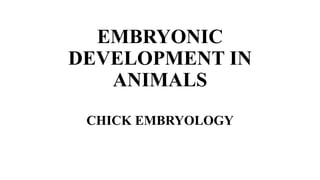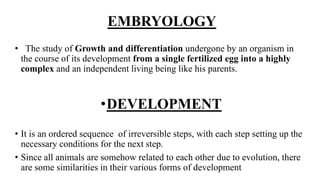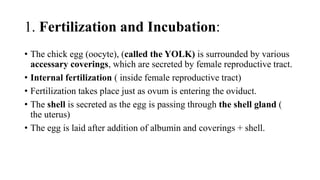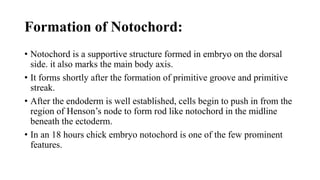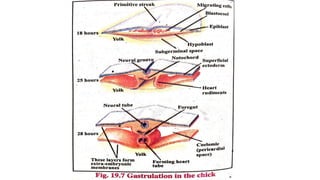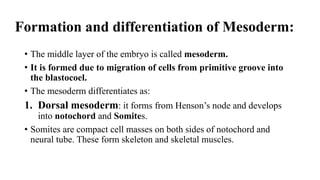The document discusses chick embryology, detailing the stages of development from fertilization to organogenesis in a chick, which is part of the vertebrate phylum Chordata. Key stages include fertilization, cleavage, formation of the blastula, gastrulation, notochord formation, and neurulation, highlighting the development of germ layers and the eventual formation of the nervous system. It also covers the significance of structures such as the primitive streak and Henson's node in the differentiation of the embryo.
